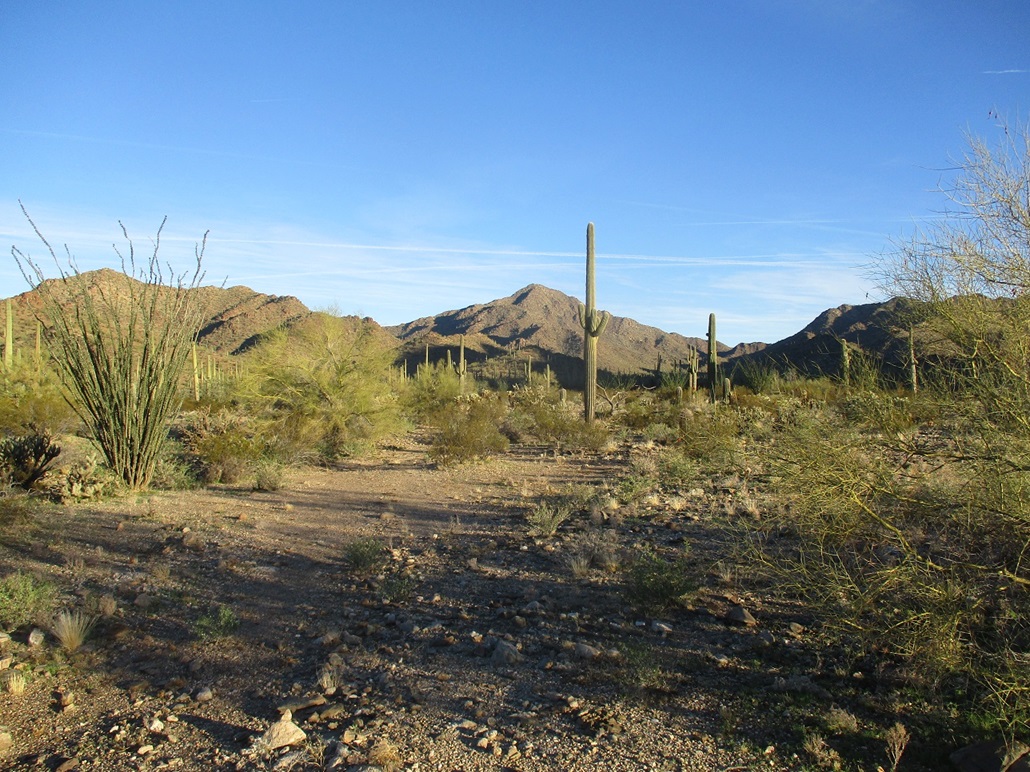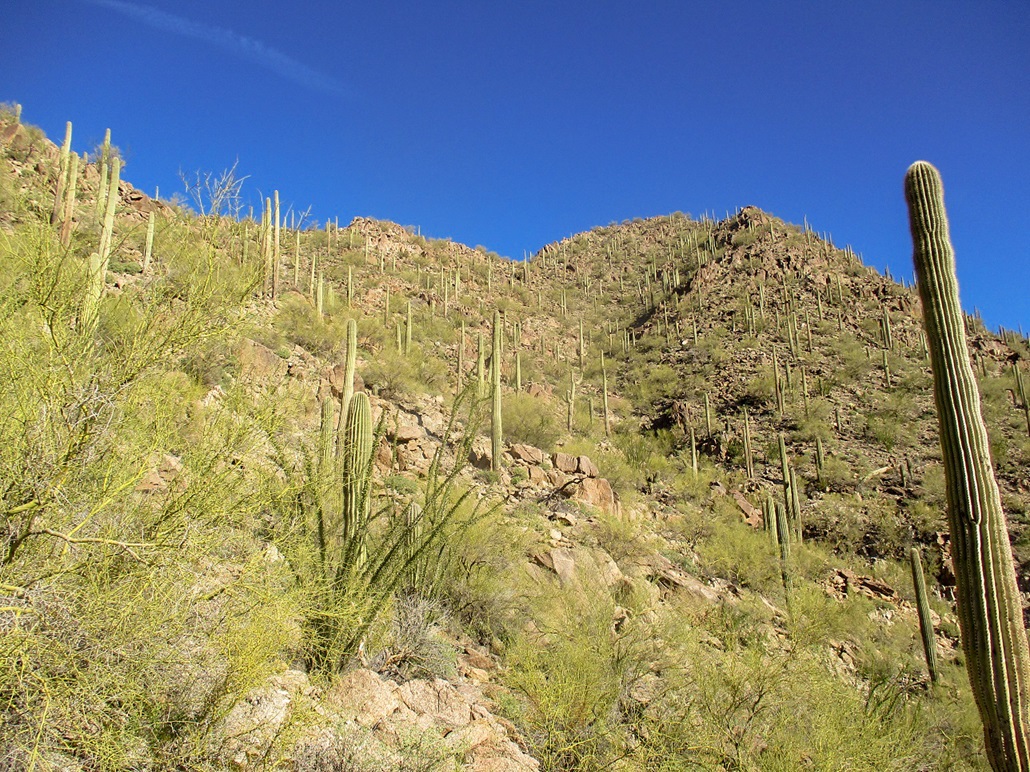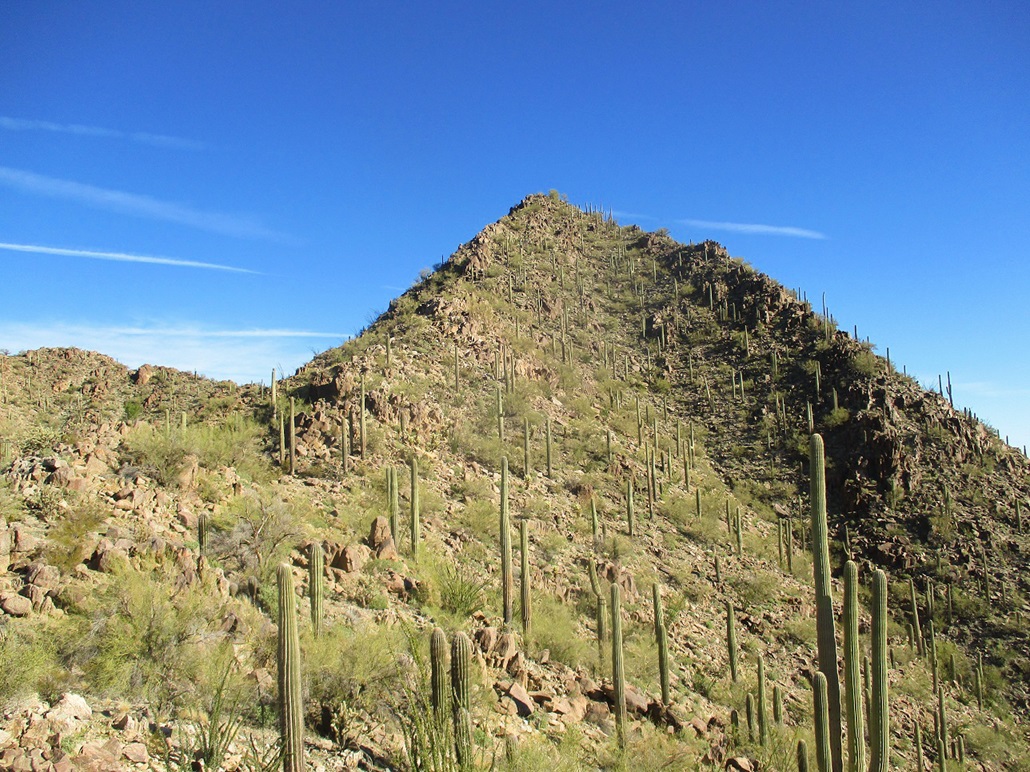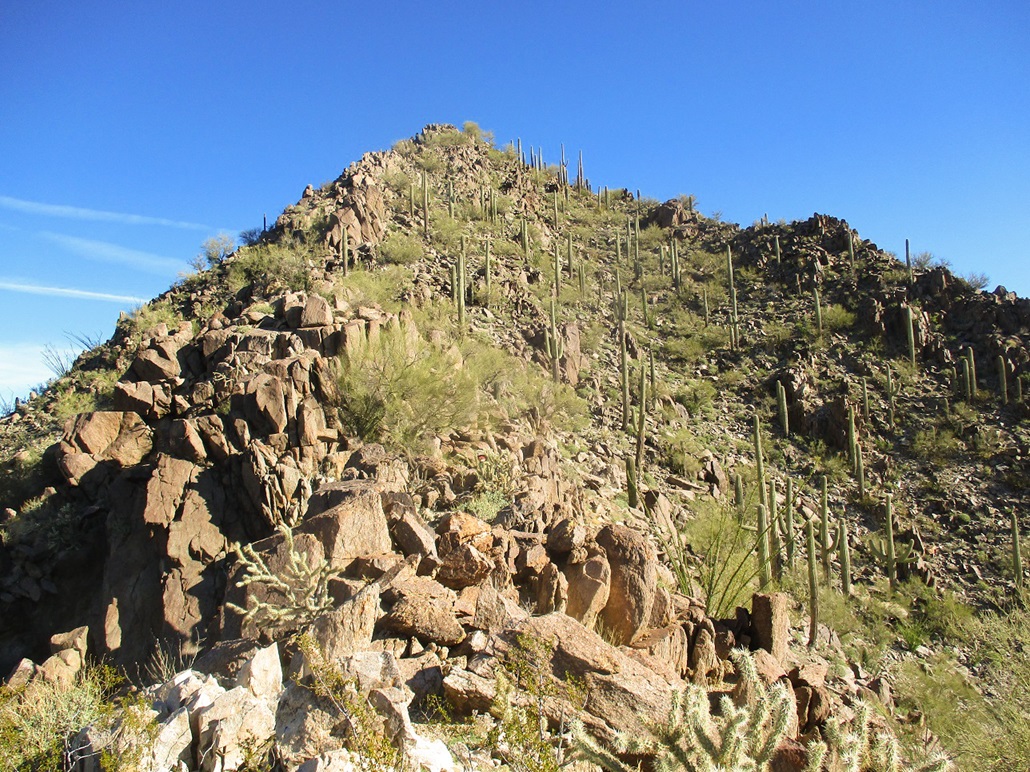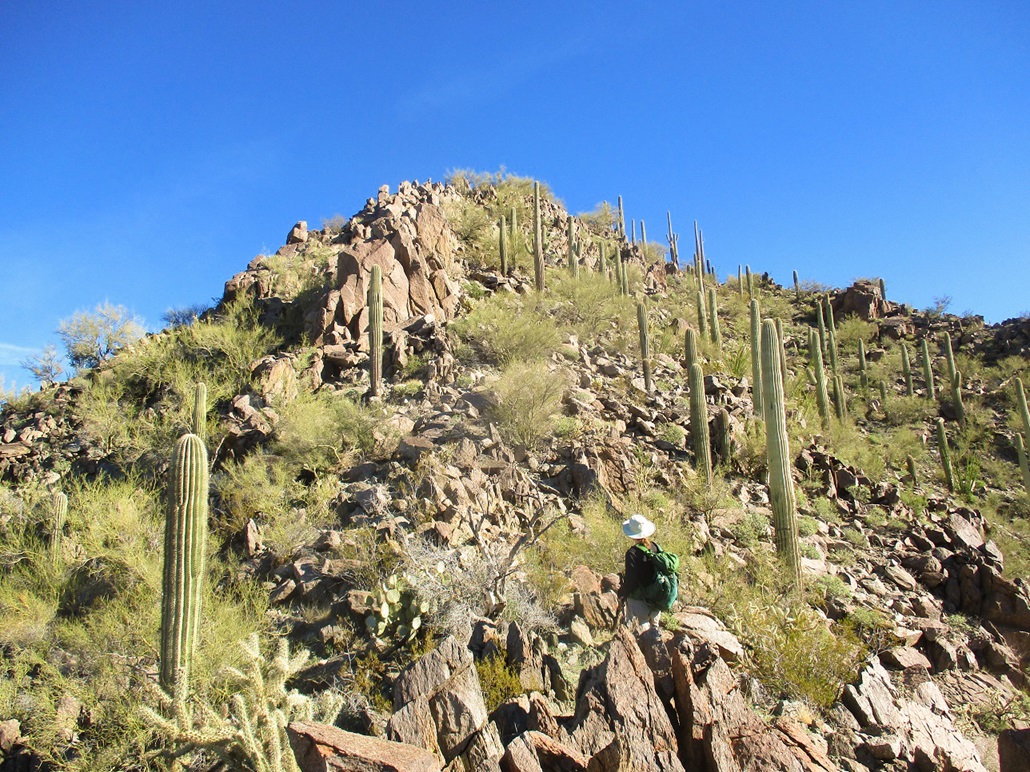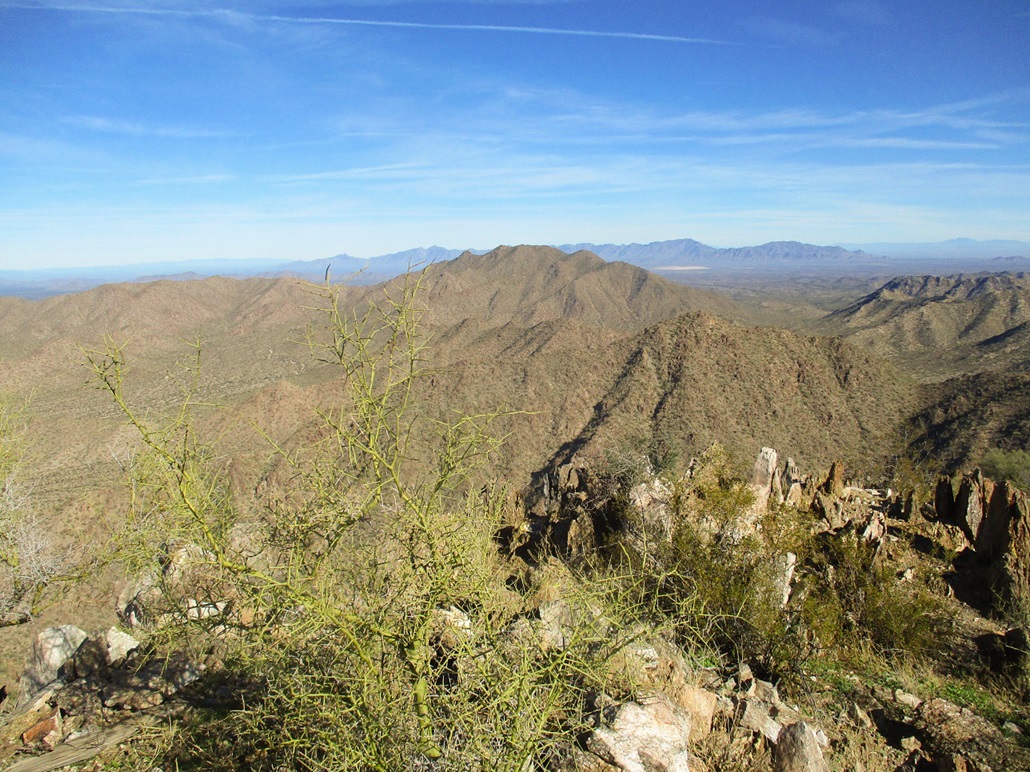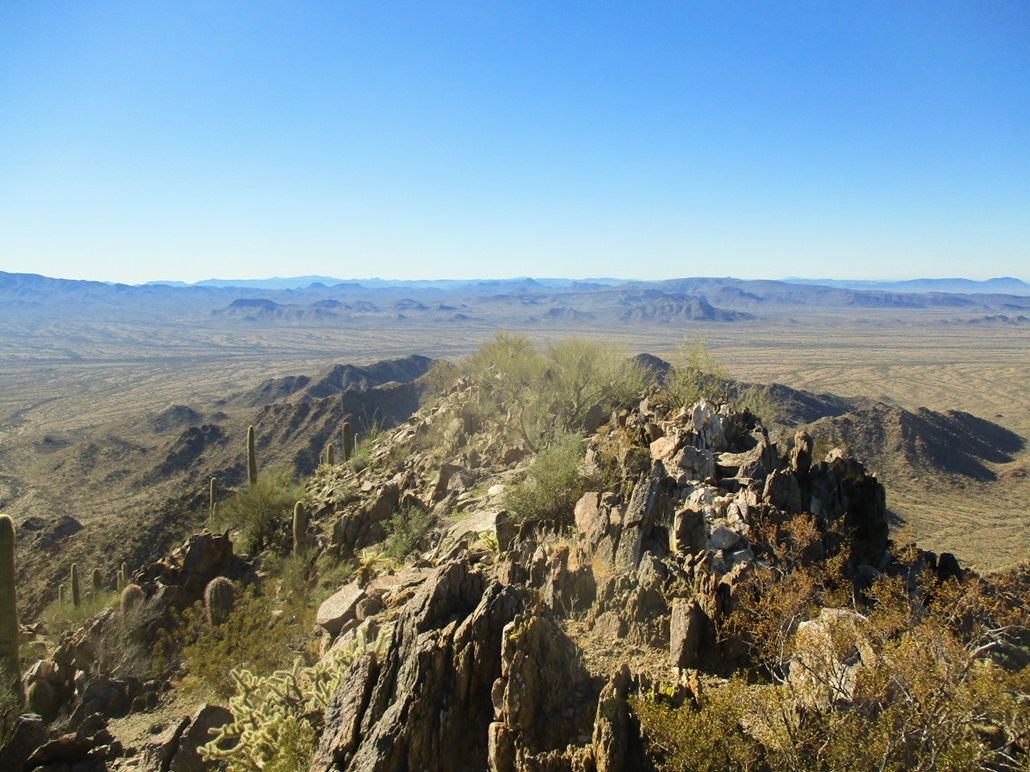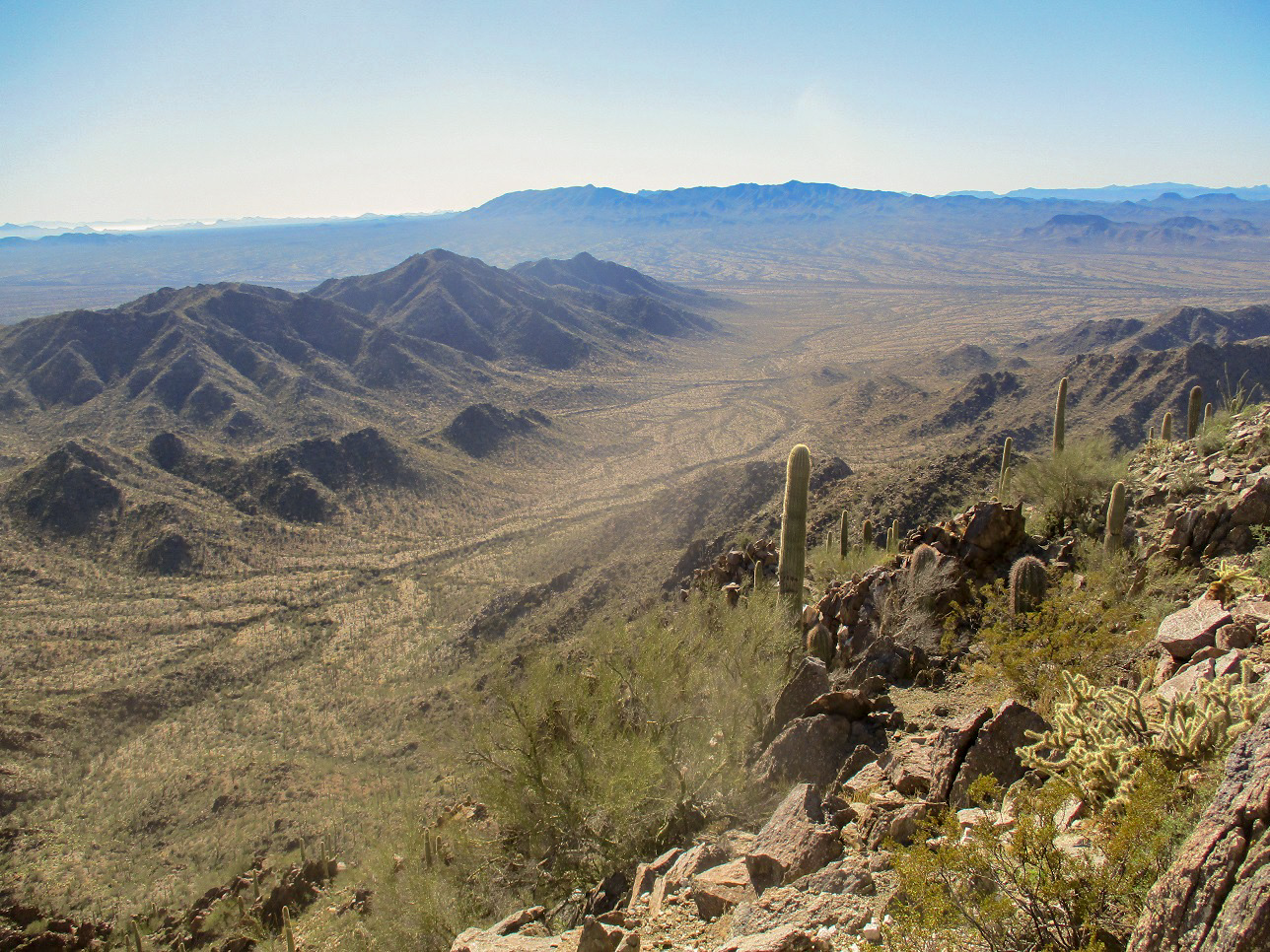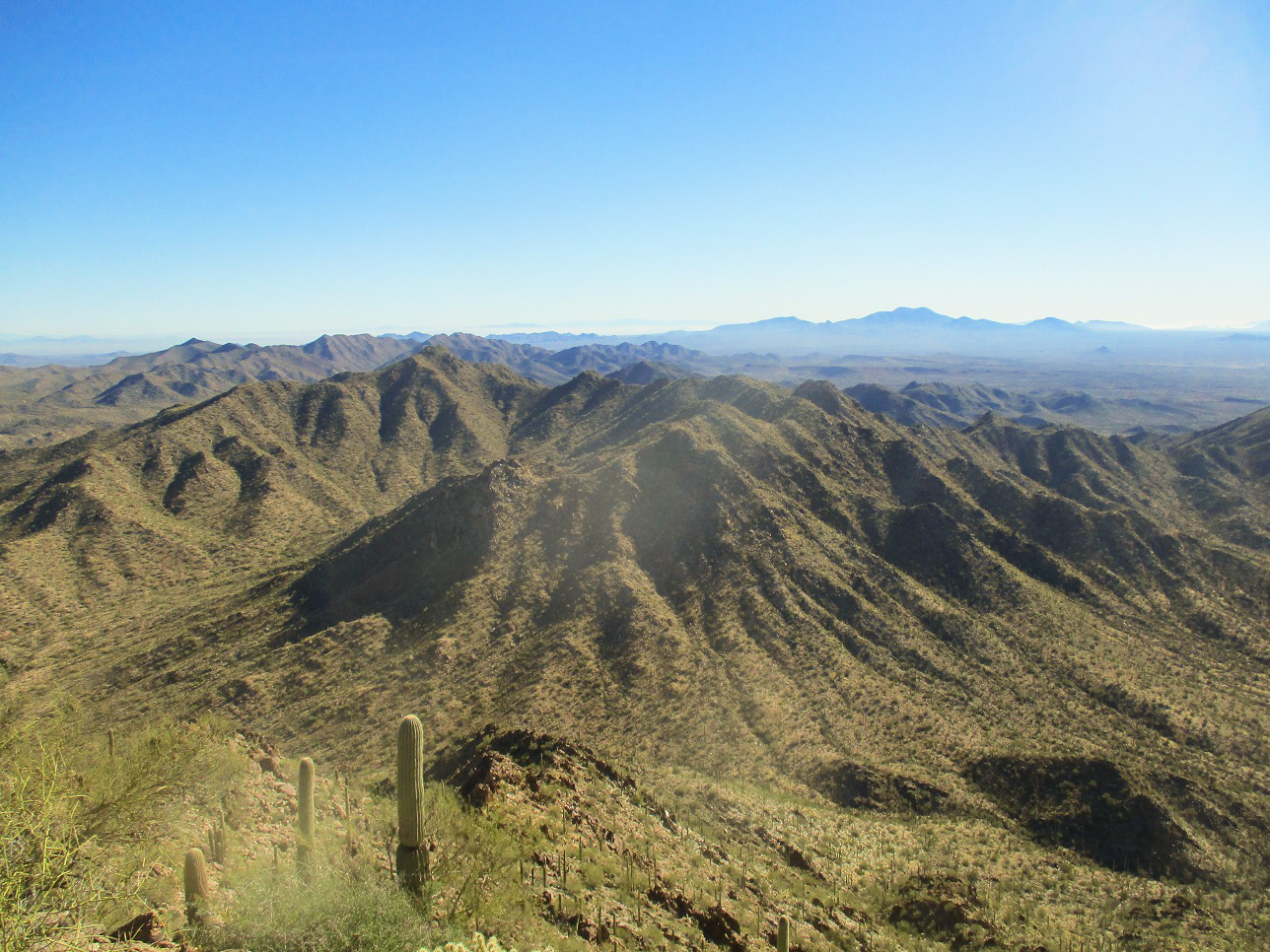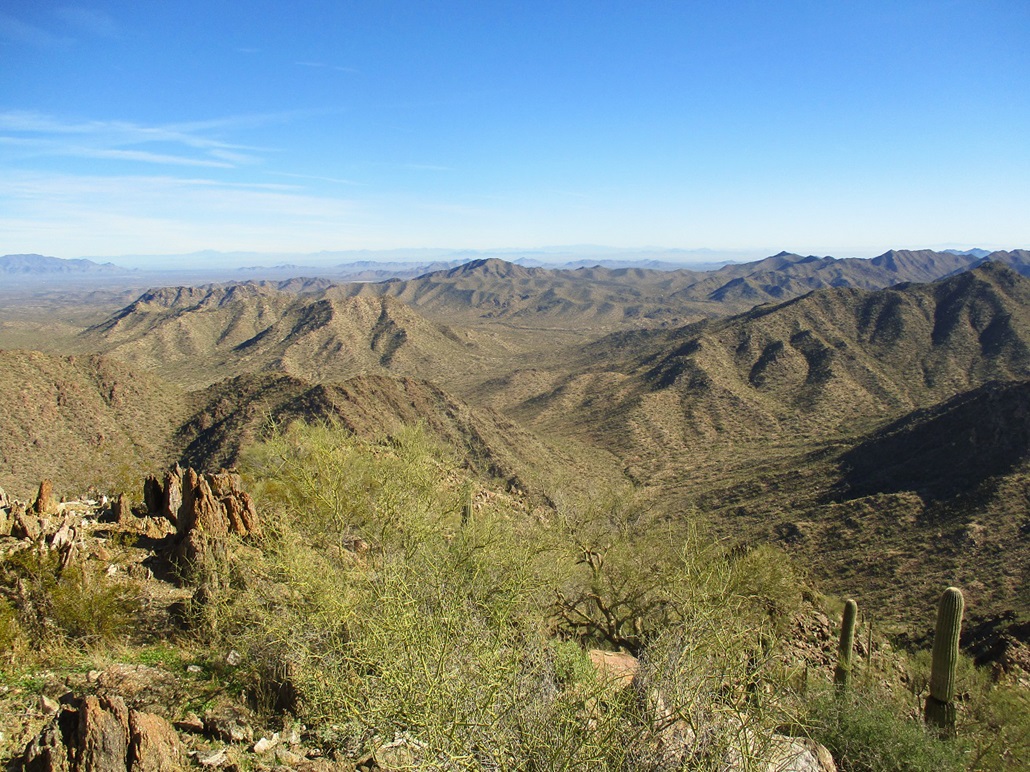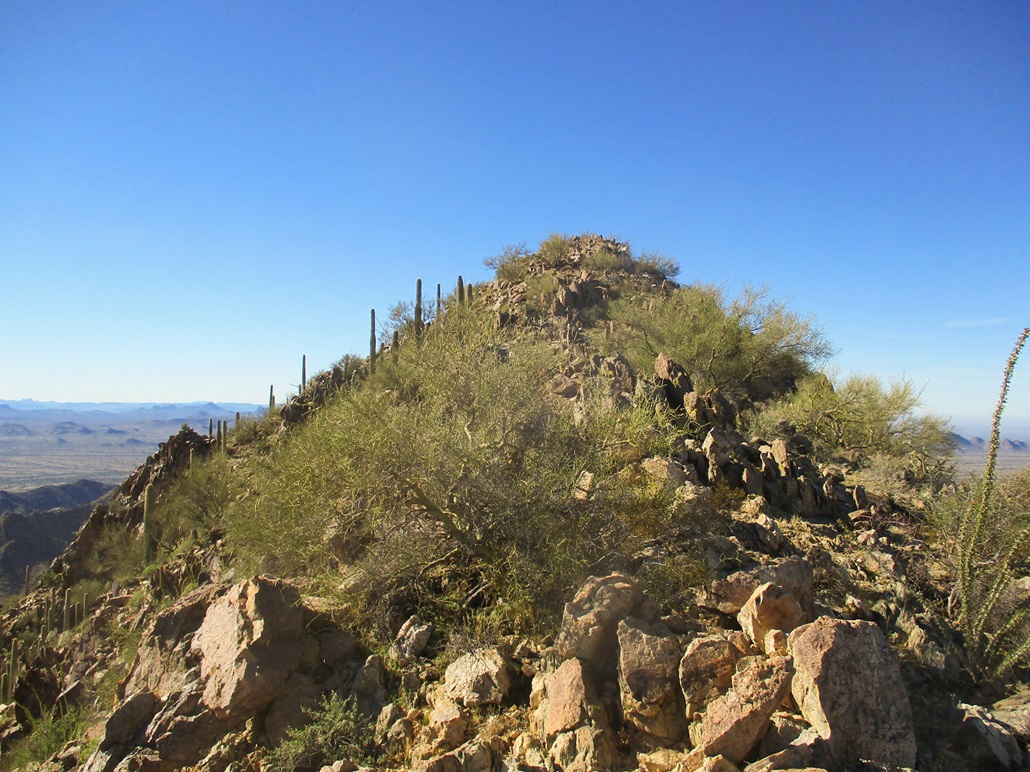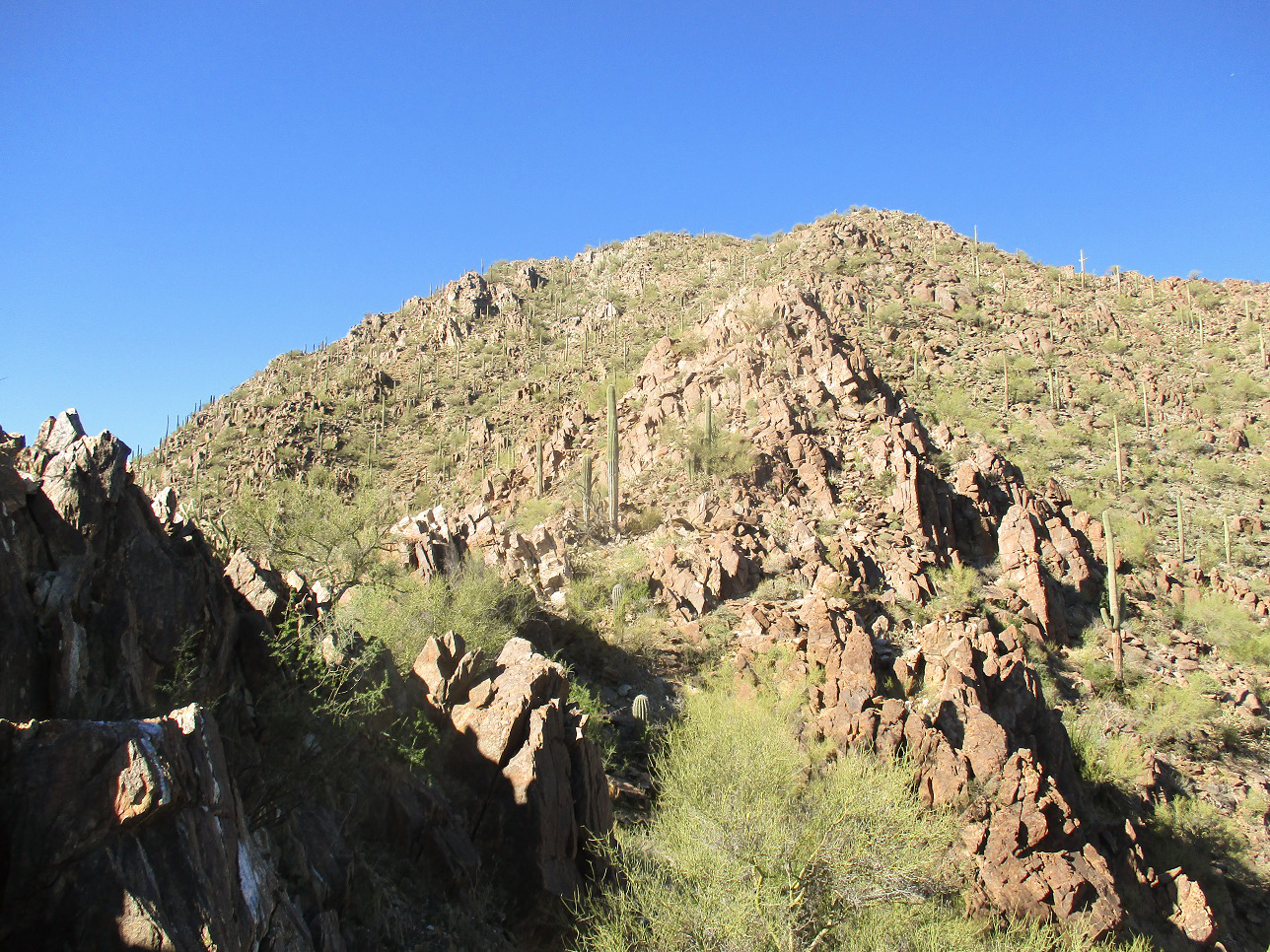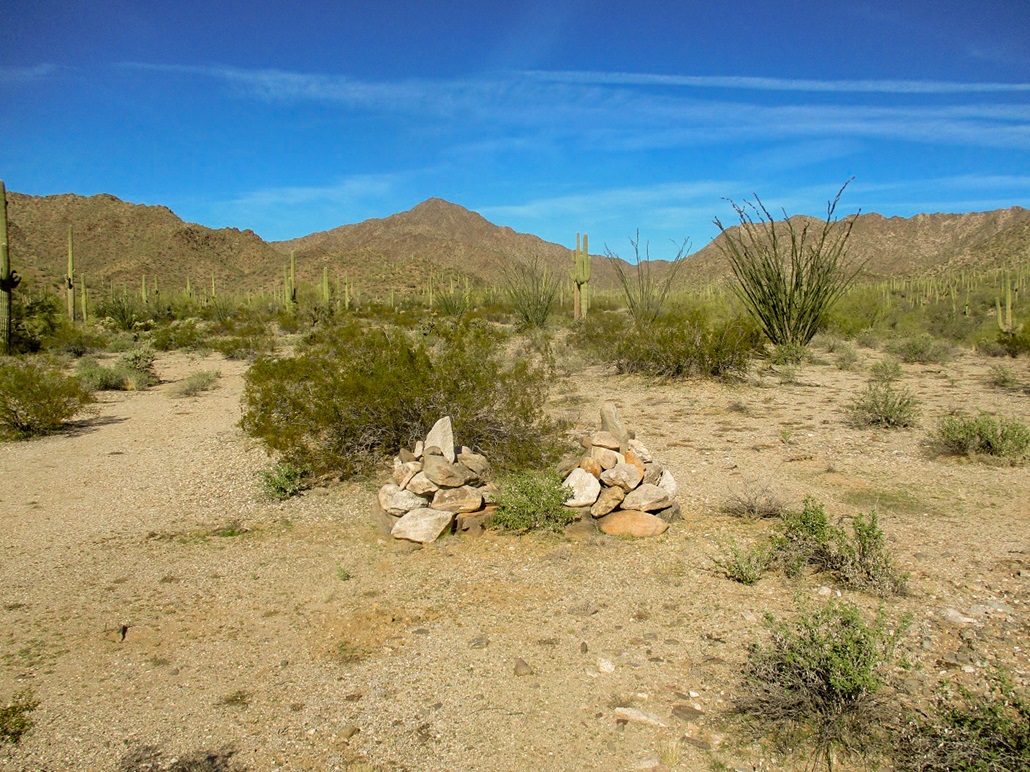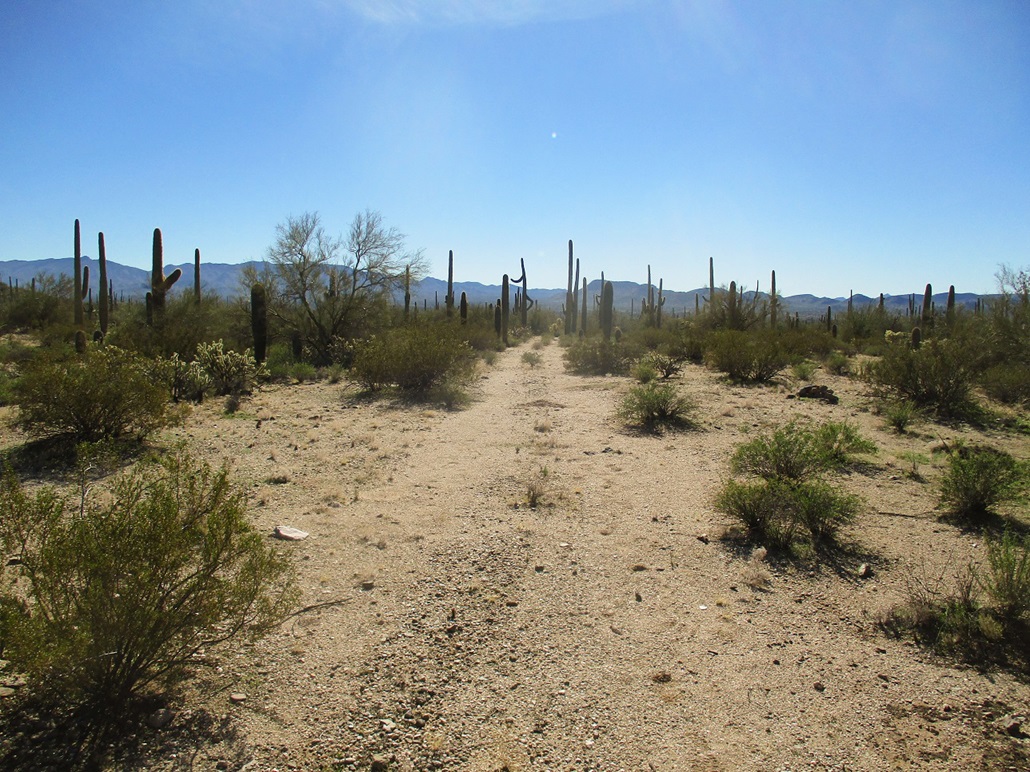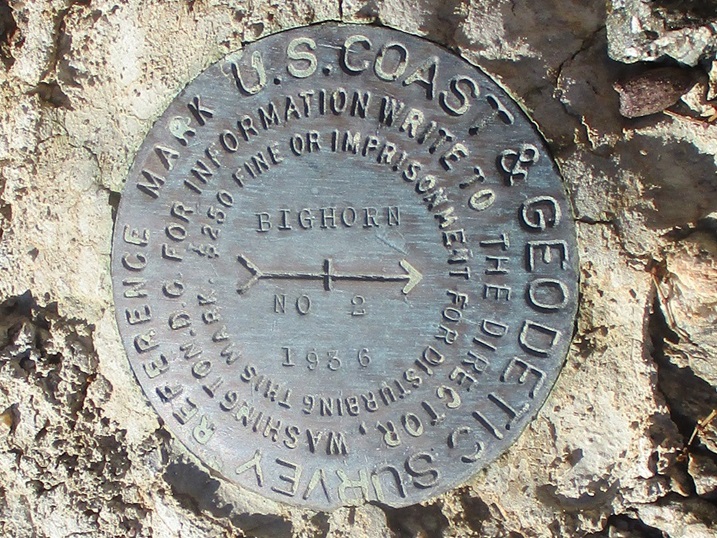
The Mountains of Arizona
• www.surgent.net
|
| Big Horn Benchmark |
• Maricopa Mountains • Sonoran Desert National Monument • South Maricopa Mountains Wilderness • Maricopa County |
|
Date: January 5, 2020
• Elevation: 3,183 feet
• Prominence: 1,183 feet
• Distance: 7.5 miles
• Time: 6 hours
• Gain: 1,530 feet
• Conditions: Mostly blue skies, cool at first, then warmer
• Teammates: Matthias Stender
Arizona
•
Main
•
AZ P1K
•
PB
•
LoJ
Matthias and I teamed to climb this peak, on the south part of the Sonoran Desert National Monument, between highways AZ-238 and Interstate-8. It is the next-biggest peak south of the Maricopa Mountains highpoint, which we climbed back in February.
I had in hand a trip report from HikeArizona, which described the general approach and terrain of the peak. Looking on a map, there is just one logical route, to follow an old track and a wash northbound from a parking area just off Interstate-8. We could probably figure this out on our own but having any sort of information is helpful.
I picked up Matthias and drove us to the nominal trailhead, driving south through Maricopa, the Ak Chin Community and Stanfield, and catching Interstate-8, which we followed westbound. The gate we wanted was about 0.3 mile west of Milepost 135, about fifteen miles after getting on the freeway. It can only be accessed from the westbound lanes; there is no easy way to access it from the eastbound lanes.
Past the gate, I drove in just a couple hundred feet to the wilderness boundary, and parked out of sight from the highway. We started walking at 8 a.m. sharp. The peak is visible in the skyline to the north, about two and a half miles away.
We walked the track north about a mile and a quarter to where it ended, just petering out in the desert. Then we angled right in dropped into the wash, and followed that for another mile. The wash was mostly open, with a sandy bottom and rocks. We were able to move efficiently. There were three little dryfalls to clamber up and past, and as we hiked closer to the peak, the brush closed in a little. We hiked until we were below the peak, able to view its east and south ridges. We had not gained much, maybe 300 feet, to this point.
The trip report's author had climbed up the south ridge, catching it a little farther south than where we were. He described going up, through and down a few rock outcrops along the way. Where we were, we could see an obvious saddle in the south ridge, close to the final ridge to the top, so we aimed for that saddle. Getting there was easy. The drainage by now was just a pile of rocks and brush, but we almost always had an open lane to follow. The upper slopes were rock and light brush.
We then started up the first rock outcrop, about a 25-foot gain. We found easy breaks to follow and soon were onto top of the outcrop, happy to note it only dropped a couple feet on the opposite side. The next couple outcrops were the same: steep, slightly scrambly, but with little lost elevation once past it. We were now at the base of the summit mass, the rocks forming a "spine".
We stayed right, and stuck close to the biggest rocks, keeping to the margin where the smaller talus had formed into jumbles and steps we could follow. It was moderately brushy and in a few spots, the rocks moved or the tread was loose. We got up it, and now essentially on the summit. The highest point was north about 50 feet, and we had one last tiny scrable to get there. We arrived on top at 11 a.m., a three-hour climb.
We took a half-hour break up here. We found the two witness markers, but could not locate the actual "Big Horn" benchmark. The views were exceptional in all directions. There was some haze in the lower desert valleys in the distance, though. Off in the distance we could see Table Top, Wollsey Peak, Newman Peak, Mount Lemmon and even Baboquivari.
Going down, we agreed to explore the east ridge instead of descending down the south ridge we had just come up. The trip report author had done the same. Maybe it was easier, who knows. We started down and soon were at the first of many rock bands and outcrops.
Being higher, we could see ways down these rock segments that would not involve anything fancier than hands for balance and the occasional butt-scoot. The first couple outcrops went well. Then we started getting to the bigger ones. Here, we were still able to find ways down but it was quite steep in places and would have been challeging if coming up. We would get down to some saddle and think about bailing down the slopes, but then say to ourselves "just one more rock outcrop", and see what's beyond it.
The down-climbing was not difficult but it seemed to never end. It was slow and tedious. We were finally down about 600 feet from the summit to where we could angle off the ridge and catch some slopes back into the drainage. After having dealt with both ridges, I would recommend the south ridge for the ascent and descent. Its rocks were about the same difficulty, but there were less of them on the south ridge.
Once back in the drainage, we simply hiked southbound until it opened up past the lower foothills. We then found the old track and followed it out to my car, arriving at 2 p.m, a six-hour round trip hike, covering about 7.5 miles. Another vehicle was parked in our little area, kind of a surprise given that I would assume relatively few people come here. We never saw this other person. For the drive home, I got onto westbound Interstate-8 into Gila Bend, then followed AZ-238 to Maricopa and then back to Phoenix.
The hike had gone well but it was scramblier than expected. Comparing it to the Maricopa Mountains Highpoint hike we did in February, it was rockier and steeper. It was not bad, and maybe a few spots were class-3. Had we descended via the south ridge again, we may have been out sooner, but we were happy to have tried both. Going up the east ridge, without the benefit of being able to spy routes from an elevated position, I could see how parts would get confusing and possibly more scrambly than expected. Overall, though, it was an enjoyable hike, with lots of saguaro, ocotillo (with green leaves), creosote and cholla. It is unlikely this peak will see more than a few people a year, so solitude is almost a given.
|
|
